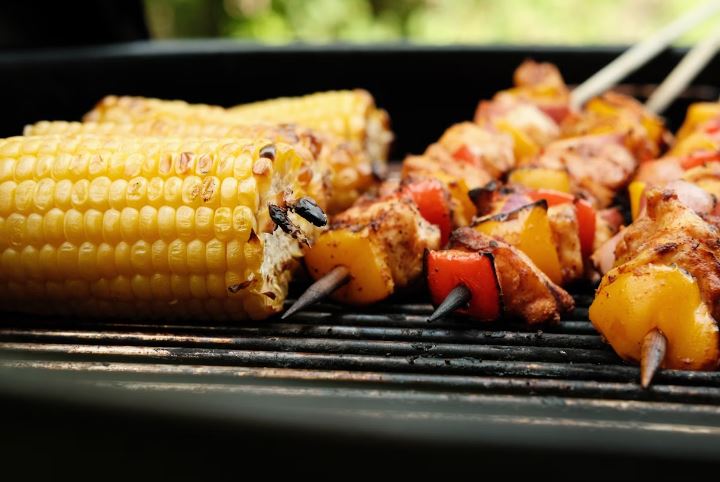-
Shop
- Furniture
- Kitchen
- Bathroom
- Home & Garden

Fired up your Weber grill, ready for some BBQ fun, but no gas is flowing?
I personally know how annoying this can be – especially when you’re all set for a tasty BBQ.
But don’t stress, this happens at times and it can usually be fixed easily.
In this post, I’ll explain why your Weber Grill gas is not flowing and how to fix it.
Let’s take a look at the potential causes of this gas flow problem first:
Also Read: Why does my grill sound like a jet engine
If your Weber grill isn’t getting enough gas, a big reason could be the propane tank acting up.
It might just be running low or totally empty, needing a refill or swap.
Another thing to check is if the tank is connected right to the grill – sometimes it’s loose or not fitted properly, messing with the gas flow.
It’s not just the tank itself that could be the problem. The tubes that carry the propane to the burners can get clogged up over time with stuff like debris, rust, or grease.
This can really limit or even stop the gas from flowing, which means you might get a weak flame or no flame at all.
The regulator plays a crucial role in controlling the gas pressure and flow in a Weber gas grill.
Weber grills use a specific type of regulator called the 8511 Hose and Regulator. Over time, exposure to weather conditions can cause the hose and regulator to wear down, potentially leading to safety hazards and gas flow problems.
This could also be caused by the regulator going into bypass mode too.
This happens when the regulator detects a potential gas leak or an imbalance in pressure, leading it to restrict the gas flow to a fraction of the normal volume.
Also Read: when is it too hot to grill outside
Accidentally putting the grill into bypass by opening the burner control knob before fully opening the tank valve can trigger this issue.
Now that you know what can affect the flow of gas in your Weber grill , let’s look into how you can fix it:
Before you start troubleshooting your Weber grill, make sure you have a full propane tank.
If the tank is low or empty, it can cause problems with the gas flow, which means your grill might not cook evenly or even light up at all.
Take a look at the tank’s gauge and replace it if it’s empty.
Also, check that the propane tank is properly connected to the grill and that all the connections are tight. This will help prevent any gas leaks.
If you’ve confirmed that the propane tank is full and properly connected, the next step is to reset the regulator. This process involves relieving any built-up pressure in the regulator, which can often resolve gas flow issues.
To reset the regulator, follow these steps:
1. Disconnect the propane tank from the grill.
2. Turn the burner knobs to the “on” position, allowing any remaining gas to escape.
3. Once the gas has been released, turn the burner knobs back to the “off” position.
4. Reconnect the propane tank, ensuring a tight and secure connection.
5. Turn on the gas and attempt to ignite the grill.
If resetting the regulator doesn’t resolve the issue, the next step is to clean the gas tubes.
These tubes are responsible for delivering gas from the regulator to the burners, and any built-up debris or clogs can restrict the gas flow.
Also Check Out Our: Versatile Electric Indoor/Outdoor Korean BBQ Grill
To clean the gas tubes, follow these steps:
For a more thorough cleaning, consider flushing the tubes with water from a hose.
This will help dislodge any stubborn clogs or buildup.
Once you’ve given those gas tubes a good clean, the next step is to make sure they’re totally dry before you put them back in.
If there’s any moisture left inside, it can cause more issues down the line, like rust or other problems. Just let the tubes air dry naturally, or you can use a clean cloth to soak up any leftover moisture.
Once they’re nice and dry, carefully put the gas tubes back in place, making sure they’re securely connected at both ends.
If you’ve tried all the troubleshooting steps and the gas still isn’t flowing properly, it might be time to consider replacing the regulator.
This part controls the gas flow and if it’s faulty, it can cause issues.
Contact Weber customer service to get a new regulator that fits your grill model. They’ll guide you through the process of replacing it, and soon enough, your grill will be back in action.
If your Weber grill is not getting enough gas flow, check if your propane tank is full and properly connected. If that’s not the problem, try resetting the regulator to release any built-up pressure.
If the gas tubes are clogged, give them a good clean with a wire brush or bent paperclip. Don’t forget to dry them thoroughly before putting them back in.
If none of these tips work, you might need to replace the regulator.
FAQs
Check the tank gauge or feel its weight. If it’s low or light, it’s likely empty. You can also do a soapy water test for leaks. Replace the tank if it’s empty and ensure a secure connection to your Weber grill.
Clean the gas tubes annually or when you notice reduced gas flow or flame quality. Remove, scrub, and flush the tubes with water, ensuring they are completely dry before reinstallation. Regular cleaning prevents gas flow issues and maintains grill performance.




Leave a comment